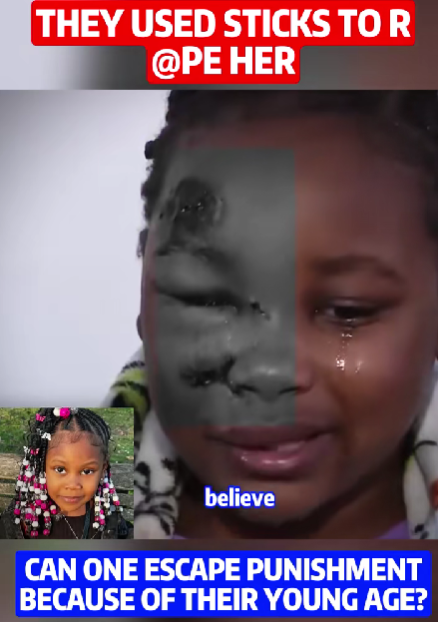In a world that should protect its most vulnerable, stories of harm against children continue to shake communities and raise painful but necessary questions: when a crime destroys a young life, who is truly held accountable — and can age ever be an excuse for escaping justice?
Every time a child becomes a victim of violence, the entire society feels the wound. The emotional scars left behind reach far beyond the child; they tear through families, classrooms, and communities. What makes such cases even more difficult is when those responsible are themselves young — too young, according to some laws, to face full legal punishment.
Legal systems across the world have long debated the balance between justice and mercy when it comes to minors. In many countries, children below a certain age cannot be tried as adults, regardless of the severity of their actions. The reasoning is rooted in psychology — that the young mind lacks full understanding of consequence, empathy, or impulse control. But this reasoning becomes deeply complicated when the victim is also a child, and the crime is unspeakable.
Communities often cry out for justice, demanding that punishment fit the harm done, no matter the offender’s age. Yet experts argue that solutions must go deeper than incarceration. True prevention, they say, starts with education, mental health awareness, and addressing cycles of abuse that can turn young lives toward violence. “When children commit terrible acts, it’s often a reflection of what they’ve seen or endured,” one child rights advocate explained. “The goal should be to protect all children — both victims and those who are lost enough to harm others.”
In recent years, several nations have begun to reform juvenile justice systems, seeking a balance between compassion and accountability. Some introduce rehabilitation programs aimed at restoring empathy, teaching responsibility, and rebuilding moral understanding. Others focus on trauma-informed care for victims — providing counseling, community support, and public education campaigns that help break the silence around violence against children.
Still, many feel that society hasn’t gone far enough. Survivors and their families often find themselves trapped in long, painful legal processes, facing questions that reopen wounds rather than heal them. For a parent watching their child suffer, no law or sentence can ever erase the pain — but justice, even in symbolic form, can bring hope.
The question remains: can youth truly absolve one from responsibility? Most experts agree that while age can shape accountability, it should never erase it. Every child deserves safety, healing, and the promise that their suffering will not be ignored.
When harm is done to a child, justice must not only punish — it must protect, educate, and prevent. Because in every young life touched by violence, there’s a chance to build a future that chooses compassion over cruelty. And that choice belongs to all of us.
